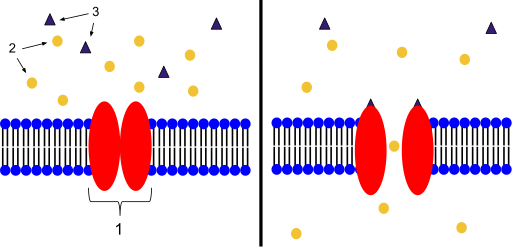Laboratory scientists Junyi Zou and Palapuravan at the University of Chicago shed light on the crucial role of potassium and sodium ions within the specific compartments inside a cell. The role of ions within a cell was a section of biology many scientists couldn’t conquer and left many scientists questioning if cells regulate ions?
Junyi Zou and Palapuravan collaborated with their professor, Yamuna Krishnan, to develop a miniature device made of DNA that enabled them to peer into the intricate workings of live cells. Thanks to the biological compatibility of DNA with cells, this innovative device seamlessly infiltrated the cell and provided the scientists with a unique window into the cell’s interior. However, Junyi Zou and Palapuravan needed to reach specific compartments of the cell: the lysosome and recycling endosomes. (Recycling endosomes are responsible for facilitating the transit of ion channels to and from the cell membrane). To accomplish this task, Junyi Zou and Palapuravan, who studied the presence of various ions in different organelles, utilized sensors to target the organelles they were researching. Once the sensors reached their designated cellular locations, they lit up whenever they came into contact with an ion. This enabled Junyi Zou and Palapuravan to quantitatively evaluate the presence of ions by measuring the brightness of the sensors.
After completing his research, Palapuravan, who focused on tracking potassium ions within the recycling endosomes, determined there are ion channels in organelles. Ion channels, which are a form of facilitated diffusion with channel proteins, are protein molecules that span across the cell membrane and allow ions to pass through their channels from high to low concentration without the need for ATP. Ion channels are also involved in Parkinson’s disease; however, current medications for Parkinson’s disease only target ion channels on the plasma membrane and not within the cell. If Parkinson’s medication can be developed to target ion channels within cells as well, does this imply a potential cure for Parkinson’s disease? I don’t know, but it is exciting to learn that ongoing research is aimed at curing the incurable! It gives us hope for future research and discoveries.
channel proteins, are protein molecules that span across the cell membrane and allow ions to pass through their channels from high to low concentration without the need for ATP. Ion channels are also involved in Parkinson’s disease; however, current medications for Parkinson’s disease only target ion channels on the plasma membrane and not within the cell. If Parkinson’s medication can be developed to target ion channels within cells as well, does this imply a potential cure for Parkinson’s disease? I don’t know, but it is exciting to learn that ongoing research is aimed at curing the incurable! It gives us hope for future research and discoveries.
Finally, after completing his research, Junyi Zou, who focused on tracking sodium ions in lysosomes, determined that lysosomes regulate cellular sodium. Lysosomes, which are made in the rough ER, are hydrolytic sacs of enzymes that enable animal cells to digest macromolecules. Following Junyi Zou’s completed research, we can now say that lysosomes assist cells in regulating their sodium levels. These lysosomes are known as lysosomal sodium-transporting proteins. Now, we can include additional information in our cell notes packet on lysosomes! Feel free to leave a comment on my post and, if you do, list one fact that you found really interesting!


Leave a Reply